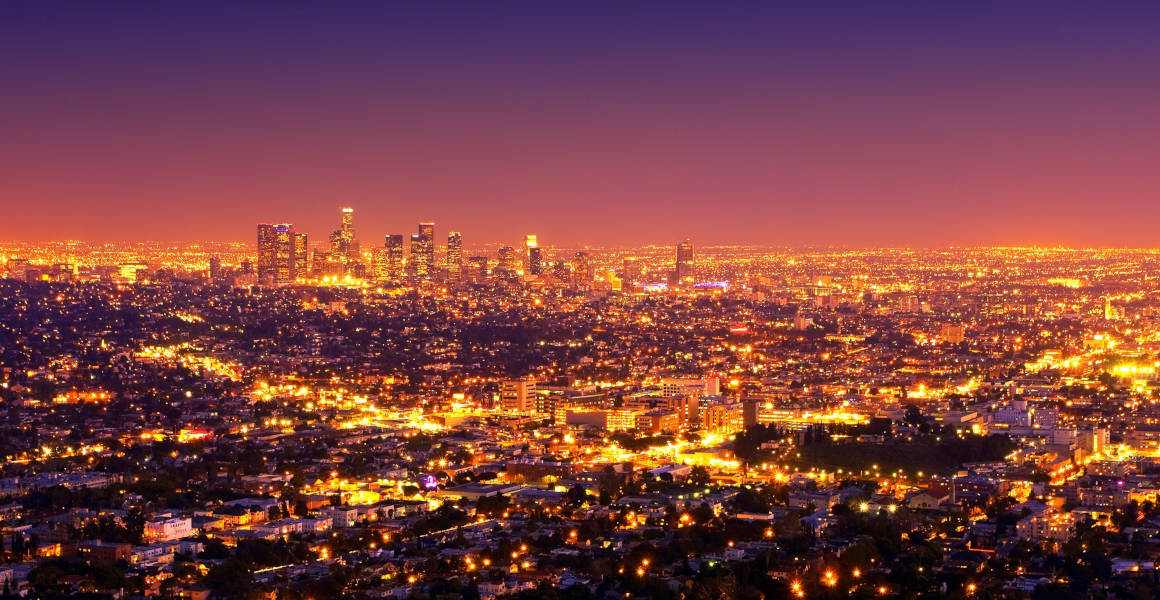
Increasing light pollution is drowning out the stars
The stars are vanishing before our very eyes, as increasing levels of light pollution mean that increasingly fewer stars are visible in the night sky above us.
A global community science project found that the night sky is becoming around 10% brighter each year on average. While this may seem like a trivial issue, it’s affecting the lives of many different animals, as well as being an expensive waste of power.
Dr Christopher Kyba, the lead author of a study reporting the results of the project, says, ‘The rate at which stars are becoming invisible to people in urban environments is dramatic.’
‘If the brightening of the night sky continues at the current rate, a child born in a place where 250 stars are visible will only be able to see 100 stars there on their 18th birthday.’
Dr Ashley King, a Future Leaders Fellow at the Museum, adds, ‘The first humans could look up at the sky and use it in so many parts of their lives. Whether it was for navigation or telling the seasons, the stars are an important part of our culture.’
‘Now, we don’t have that same experience as there’s much more light pollution.’
The findings of the study were published in the journal Science.

Increasing light pollution makes it increasingly difficult to see the night sky. Image © NOIRLab/NSF/AURA, P. Marenfeld, licensed under CC BY 4.0 via Eurekalert!.
Is light pollution getting worse?
Light pollution is not only becoming more widespread, but it’s also accelerating. The issue of light pollution was first recognised in the 1970s, when astronomers began to see the impact of the rapid increase in artificial light on their work.
At this time, the sky is estimated to have been becoming brighter by between three and six percent every year. However, as artificial lighting has continued to be rolled out, the rate has been on the increase.
Using over 50,000 observations made between 2011 and 2022, the researchers behind the current study suggest that the night sky is getting lighter by an average of 9.6% globally each year. Over an 18-year period, this would see the night sky get brighter by a factor of four.
The rate of increase is not constant throughout the world, however. In Europe, light pollution is increasing at a rate below the global average, at around 6.5% every year, whereas the same figure in North America is 10.5%.
While there were not enough observations from the rest of the world to break down the increase by continent, with few observations from large parts of Africa and Asia, the night sky is thought to be increasing in brightness by almost 8% every year.
These increases mean that around 30% of people around the world can no longer see our own galaxy, the Milky Way, which rises to 80% of people in North America.
However, it’s not only the amount of light that’s changing but also the colour. As LEDs, or light emitting diodes, become increasingly common, light pollution is becoming increasingly blue.
While these lights are more efficient than older forms of lighting they are also making it more difficult to monitor light pollution. Satellites aren’t as good at spotting blue light, which could explain why a recent satellite-based study found that lit-up areas of the world were becoming brighter by only 2.2% every year.
‘Light pollution can be monitored by Earth-monitoring satellites, but many are limited in resolution and sensitivity,’ Ashley says. ‘They generally focus on longer wavelengths towards the redder end of the spectrum, whereas shorter wavelengths tend to scatter more in the atmosphere.’
‘Human eyes, on the contrary, are better at picking up on shorter, bluer wavelengths at night. This means that while increases in blue light pollution aren’t as obvious for satellites, the resulting skyglow is more obvious to us.’

Newly-hatched turtles can be drawn towards artificial light at night, making it less likely they will survive. Image © mundosemfim/Shutterstock
What is the impact of light pollution?
Light pollution has a variety of impacts, some of which are more obvious than others. At the most basic level, light pollution represents wasted energy as it is lost into the night sky, which represent additional costs in terms of finances and climate emissions.
Meanwhile, for scientists and other workers who depend on having clear access to the night sky it also gets in the way of their jobs.
‘There is a camera forming part of a meteor network at the Museum, but because light pollution is high in London, we won’t detect all the meteors that a camera in the countryside would,’ Ashley explains.
‘If we can’t pick up these fainter meteors, then we have a gap in our data and we’re missing information about where extraterrestrial material such as dust is coming from in our solar system.’
Most research focusing on the impacts of light pollution, however, has looked at its impact on wildlife. It can affect the ability of nocturnal animals such as bats to navigate and can cause them to collide with objects.
Turtles rely on the bright white light of the Moon reflecting off the sea to find their way after they hatch at night, and artificial lighting near beaches can cause them to head in the wrong direction.
Predators can also take advantage of bright light to find food, especially when their prey are drawn towards bright lights, and affect the balance of ecosystems.
But the impacts also go beyond behaviour and can impact animals on a cellular level. Artificial light can suppress the production of melatonin, a hormone which many animals use to control their body clock.
Increasing evidence suggests that the suppression of melatonin can be linked to a number of health conditions in humans and other animals.

Night sky reserves are areas where there is very little or no light pollution. Image © Alexander Loki/Shutterstock
How can I reduce light pollution?
Reducing the impacts of light pollution can be as simple as changing the fixtures in your home.
Reducing the number of external lights you have is one quick way to reduce light pollution. Floor lights, and raised lights such as bollards, can be particularly problematic as their light can reflect off nearby surfaces.
Reducing the amount of blue light being emitted by changing LED lights to produce warmer colours can also help. Where it’s not possible to remove or change the colour of a light fitting, try using motion-sensitive lights so that they only activate when they are needed.
Controlling the direction of lights is also important. By using cones or baffles to focus the direction lights are shining in reduces the amount that is being lost into the surroundings and spilling into the night sky.
Beyond changing of the use of lights, you can also take action to try and reduce light pollution more widely. This could include talking to friends and family to raise awareness, taking part in activities such as Dark Sky Week, or campaigning for your local area to use less polluting lighting.
You could also take part in community science projects to help scientists better understanding the prevalence and impacts of light pollution.
‘While an increase in light pollution may seem obvious, trying to put a number on it is more difficult than you might imagine, especially on a global scale,’ Ashley says.
‘Community science studies such as the one behind this paper are important to study impacts over a large area, and to get people more involved in science.’
Take part in a project


































